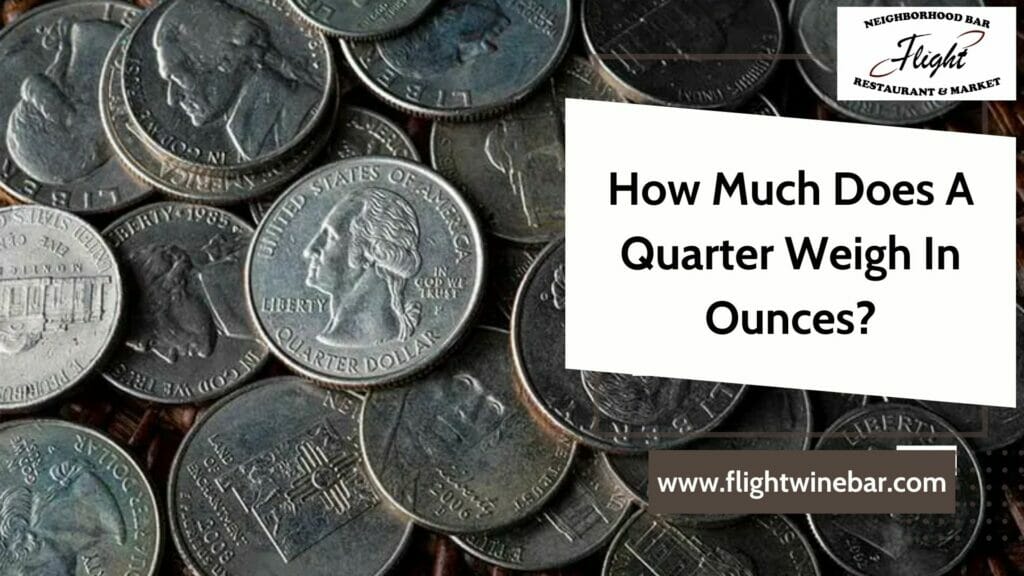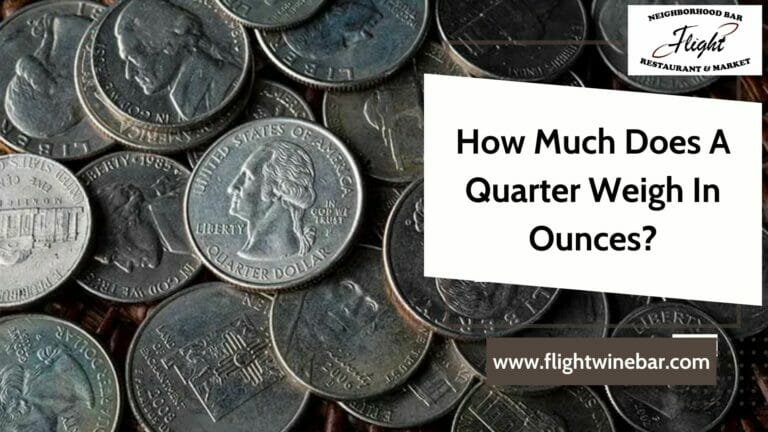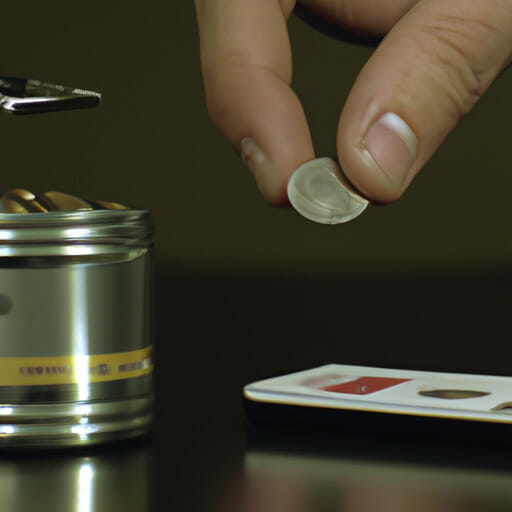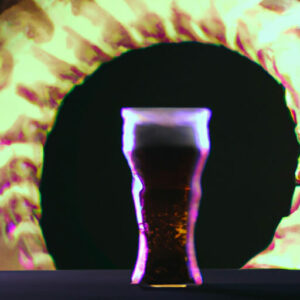A quarter is a common coin used in the United States and other countries. It is a 25-cent piece, and it is made of a variety of metals. Many people are curious to know how much a quarter weighs in ounces. This article will provide an answer to this question and explain why the weight of a quarter can vary.

How to Calculate the Weight of a Quarter in Ounces?
Contents
- 1 How to Calculate the Weight of a Quarter in Ounces?
- 2 The History of the Quarter and Its Weight
- 3 What Factors Affect the Weight of a Quarter?
- 4
- 5 How to Use a Kitchen Scale to Measure the Weight of a Quarter
- 6 The Difference Between a Quarter and Other Coins in Terms of Weight
- 7 How to Tell the Difference Between a Quarter and Other Coins by Weight
- 8 The Pros and Cons of Using a Quarter as a Unit of Measurement for Weight
- 9 How to Use a Quarter to Measure the Weight of Other Objects
- 10 How much does a quarter weigh in ounces?
- 11 Conclusion
Calculating the weight of a quarter in ounces is a simple task that can be done in just a few steps. Here’s how to do it:
First, you’ll need to find a quarter. Any quarter will do, but it’s best to use one that is in good condition.
Next, you’ll need a kitchen scale. Place the quarter on the scale and make sure it is balanced.
Once the quarter is balanced, take a look at the scale’s display. The weight of the quarter should be displayed in ounces.
And that’s it! You now know the weight of a quarter in ounces. It’s a great way to learn more about coins and their weights. Have fun!
The History of the Quarter and Its Weight
The quarter is a beloved coin in the United States, and it has a long and interesting history. It was first introduced in 1796, and it has been in circulation ever since. The quarter has gone through many changes over the years, but its weight has remained relatively consistent.
The original quarter was made of silver and weighed 6.68 grams. This weight was chosen because it was the same as the Spanish two-real coin, which was widely used in the United States at the time. The silver content of the quarter was gradually reduced over the years, and by 1965 it was made of a copper-nickel alloy. This alloy was chosen because it was more durable than silver and could withstand the wear and tear of circulation.
The weight of the quarter was adjusted slightly in 1971 when the United States switched to a decimal currency system. The new quarter weighed 5.67 grams, which was slightly lighter than the original. This change was made to make the quarter easier to handle and to make it more consistent with the other coins in the new system.
Today, the quarter is still made of a copper-nickel alloy and it still weighs 5.67 grams. It is a beloved coin that is used in everyday transactions, and its weight has remained consistent for over two centuries. It is a reminder of the long and fascinating history of the United States and its currency.
What Factors Affect the Weight of a Quarter?
The weight of a quarter can vary depending on a few factors. The most important factor is the type of quarter. Quarters minted before 1965 are made of 90% silver and 10% copper, and weigh 6.25 grams. Quarters minted after 1965 are made of a copper-nickel alloy and weigh 5.67 grams.
The year of the quarter also affects its weight. Quarters minted between 1965 and 1998 weigh 5.67 grams, while quarters minted after 1998 weigh 5.67 grams.
The mint mark of the quarter can also affect its weight. Quarters minted at the Philadelphia Mint weigh 5.67 grams, while quarters minted at the Denver Mint weigh 5.75 grams.
Finally, the condition of the quarter can affect its weight. Quarters that are in good condition will weigh more than quarters that are worn or damaged.
Overall, the type, year, mint mark, and condition of a quarter can all affect its weight. Knowing these factors can help you determine the weight of a quarter.
How to Use a Kitchen Scale to Measure the Weight of a Quarter
Measuring the weight of a quarter is easy with a kitchen scale! Here’s how to do it:
1. Place the kitchen scale on a flat, stable surface.
2. Turn the scale on and make sure it is set to measure in ounces.
3. Place the quarter on the scale and wait for the reading to stabilize.
4. The weight of the quarter should be displayed on the scale.
That’s all there is to it! With a kitchen scale, you can quickly and easily measure the weight of a quarter. Have fun experimenting with different coins and objects to see how much they weigh!
The Difference Between a Quarter and Other Coins in Terms of Weight
When it comes to coins, the quarter is a unique one! It has a distinct weight that sets it apart from other coins. Let’s take a look at the difference between a quarter and other coins in terms of weight.
The quarter is the heaviest coin in circulation in the United States. It weighs 5.67 grams, which is almost twice as much as a dime, which weighs 2.268 grams. The nickel is the second heaviest coin, weighing 5 grams. The penny is the lightest coin, weighing only 2.5 grams.
The quarter is also the thickest coin in circulation. It is 0.069 inches thick, while the dime is 0.053 inches thick, the nickel is 0.077 inches thick, and the penny is 0.062 inches thick.
So, when it comes to weight and thickness, the quarter stands out from the other coins. It is the heaviest and thickest coin in circulation, making it a unique and interesting coin to collect!
How to Tell the Difference Between a Quarter and Other Coins by Weight
Do you ever find yourself wondering how to tell the difference between a quarter and other coins by weight? Well, you’re in luck! It’s actually quite easy to tell the difference between a quarter and other coins by weight. Here’s how:
First, you’ll need a scale that can measure in grams. Place the coin on the scale and note the weight. A quarter weighs 5.67 grams, so if the coin weighs more than that, it’s not a quarter. If it weighs less than 5.67 grams, it’s not a quarter either.
Next, you’ll need to compare the weight of the coin to the weight of other coins. A dime weighs 2.268 grams, a nickel weighs 5 grams, and a penny weighs 2.5 grams. If the coin weighs more than 5.67 grams, it’s likely a half-dollar. If it weighs less than 2.268 grams, it’s likely a penny.
Finally, you can use a magnifying glass to look at the coin’s design. A quarter has a unique design on the back, featuring a bald eagle and the words “United States of America.” If the coin doesn’t have this design, it’s not a quarter.
Now you know how to tell the difference between a quarter and other coins by weight! With a little practice, you’ll be able to quickly and accurately identify coins. Happy counting!
The Pros and Cons of Using a Quarter as a Unit of Measurement for Weight
When it comes to measuring weight, the quarter is an interesting unit of measurement. On the one hand, it is a convenient and easy-to-understand unit of measurement. On the other hand, it is not a very precise unit of measurement. Let’s take a look at the pros and cons of using a quarter as a unit of measurement for weight.
The Pros
One of the biggest advantages of using a quarter as a unit of measurement for weight is that it is easy to understand. Most people are familiar with the quarter, so it is easy to explain to others. It is also a convenient unit of measurement, as it is easy to carry around and use.
The Cons
The main disadvantage of using a quarter as a unit of measurement for weight is that it is not very precise. A quarter is not a very small unit of measurement, so it is not suitable for measuring very small weights. Additionally, it is not a very accurate unit of measurement, as it can be difficult to determine the exact weight of an object using a quarter.
Overall, the quarter is an interesting unit of measurement for weight. It is easy to understand and convenient to use, but it is not very precise or accurate. If you are looking for a precise and accurate unit of measurement for weight, then the quarter may not be the best choice. However, if you are looking for a convenient and easy-to-understand unit of measurement, then the quarter may be a good option.
How to Use a Quarter to Measure the Weight of Other Objects
Measuring the weight of objects can be a tricky task, but with a little bit of ingenuity, you can use a quarter to do the job! Here’s how:
First, you’ll need to find a flat surface to place the object on. This could be a table, countertop, or even the floor.
Next, place the quarter on the object. If the object is too large to fit the quarter on top, you can place the quarter next to the object.
Now, you’ll need to find something to weigh the quarter. This could be a kitchen scale, a bathroom scale, or even a balance scale.
Once you have the quarter weighed, you can use that weight to calculate the weight of the object. To do this, simply divide the weight of the quarter by the number of quarters you used. For example, if you used two quarters, divide the weight of the quarter by two.
And that’s it! With a little bit of creativity, you can use a quarter to measure the weight of other objects. So the next time you need to weigh something, don’t forget to grab a quarter!
How much does a quarter weigh in ounces?
The weight of a United States coin – quarter, to be precise – is 5.67 grams, which is equal to 0.2 ounces. The diameter of the quarter is 24.3 millimeters and the thickness is 1.75 millimeters or 0.069 inches thick, making it the largest U.S coin among all denominations The metals used for making quarters are Cupronickel (75% copper and 25% nickel) for the outer layers and pure copper for the inner layer; these two components make up approximately 8% of its total weight in combined form (with 6 grams being copper).
A quarter has been produced by US mint since 1796 when John Reich designed it initially; however, its original design was modified several times over a period beginning from 1804 till present day where it now features a small version of Statue Of Liberty on the obverse side and Washington’s bust on reverse side with ‘United States Of America’ written at its circumference along with ‘25c E Pluribus Unum’ inscription signifying its face value as 25 cents (1/4th of US$1).
The use of coins in all possible monetary transactions within United States makes them an important part of American economy despite their relatively small size & weight compared to banknotes; so assessing their weights correctly becomes an important part while handling money related tasks such as calculating change due amount & verifying acceptability criteria during transaction processes etc., which can be done easily by knowing exact weights like that mentioned above for physical coins like quarters!
Conclusion
In conclusion, a quarter weighs 2.268 ounces. This is a relatively light weight for a coin, making it easy to carry around and use in everyday transactions.








